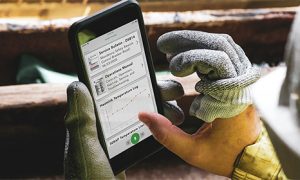Magic Leap 2 – Pricing Released

Magic Leap 2 Base
$3,299 (US only)
Magic Leap 2 Base targets professionals and developers that wish to access one of the most advanced augmented reality devices available. Use in full commercial deployments and production environments is permitted. The device starts at an MSRP $3,299 USD (US only) and includes a 1-year limited warranty.
Magic Leap 2 Developer Pro
$4,099 (US only)
Magic Leap 2 Developer Pro provides access to developer tools, sample projects, enterprise-grade features, and monthly early releases for development and test purposes. Recommended only for internal use in the development and testing of applications. Use in full commercial deployments and production environments is not permitted. Magic Leap 2 Developer Pro will start at an MSRP $4,099 USD (US only) and includes a 1-year limited warranty.
Magic Leap 2 Enterprise
$4,999 (US only)
Magic Leap 2 Enterprise is targeted for environments that require flexible, large scale IT deployments and robust enterprise features. This tier includes quarterly software releases fully manageable via enterprise UEM/MDM solutions. Use in fully commercial deployments and production environments is permitted. Magic Leap 2 Enterprise comes with 2 years of access to enterprise features and updates and will start at an MSRP $4,999 USD (US only) and includes an extended 2-year limited warranty.
Most Immersive
Magic Leap 2 is the most immersive AR device on the market. It features industry leading optics with up to 70° diagonal FOV; the world’s first dynamic dimming capability; and powerful computing in a lightweight ergonomic design to elevate enterprise AR solutions.
Built for Enterprise
Magic Leap 2 delivers a full array of capabilities and features that enable rapid and secure enterprise deployment. With platform-level support for complete cloud autonomy, data privacy, and device management through leading MDM providers, Magic Leap 2 offers the security and flexibility that businesses demand.
Empowering Developers
Magic Leap 2’s open platform provides choice and ease-of-use with our AOSP-based OS and support for leading open software standards, including OpenGL and Vulkan, with OpenXR and WebXR coming in 2H 2022. Our platform also supports your choice of engines and tools and is cloud agnostic. Magic Leap 2’s robust developer portal provides the resources and tools needed to learn, build, and publish innovative solutions.







